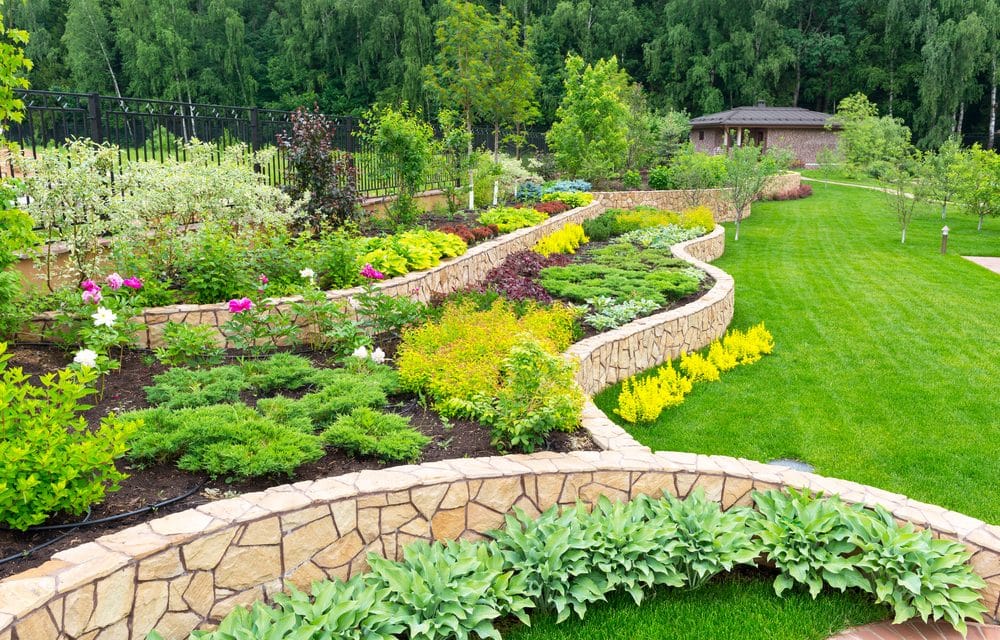The American Society of Landscape Architects (ASLA) has introduced a series of free online sustainable design guides that highlight cutting-edge ways for residential landscapes to support the environment—no matter the location or property size.
The ASLA sustainable residential design guides center around increasing energy efficiency, improving water management, applying ecological design and using low-impact materials. Developed for homeowners and landscape architects and designers alike, the guides are designed to help spread more sustainable and resilient practices.
The four guides fit into a larger trend about the growing preparedness of homeowners to make changes to their landscapes in response to climate change. The ASLA 2017 Residential Landscape Architecture Trends Survey results showed that consumers prefer sustainable design elements for their outdoor living spaces.
Through integrated site design, a comprehensive approach to sustainable building and site design, sustainable residential landscape architecture practices can not only improve the environment, but also result in net-zero or even climate positive homes.
ASLA’s guides offer a wide selection of tips, research, and best practices, including The Sustainable SITES Initiative™ (SITES®), a system for developing sustainable landscapes.
Here are some best practices from the guides:
- Plant pollinator gardens. Bees, bats, and a number of other animals, including birds, beetles, and butterflies, play an important role in keeping ecosystems functioning, and provide vital services such as pollination. Homeowners can support pollinator population growth through such simple and cost-effective ways as growing pollinator-friendly plants, creating urban and residential beekeeping systems, and building bat houses.
- Practice ecological gardening. Edible gardens enable homeowners to grow their own food. However, fertilizers used in home gardens can pollute local watersheds through runoff. To avoid contaminating watersheds and damaging local ecosystems, homeowners growing productive landscapes should practice ecological gardening by using productive plants native to their environment and limit the use of chemicals.
- Install drip irrigation. Drip irrigation systems provide water through slow application directly at plants’ root zones, avoiding excess watering while keeping the roots at optimum moisture level. These systems reduce over-watering, evaporation, runoff and deep percolation of water. Drip irrigation is a cost-efficient means of improving water efficiency. It is adaptable to any landscape and requires minimal maintenance.
- Reuse and recycle. Instead of using increasingly-scarce virgin woods, particularly from tropical hardwoods, homeowners can use reclaimed wood from existing structures and avoid sending that material to the landfill. Recycled wood can be salvaged from places like old buildings and shipping materials, and restored for a variety of residential uses, including decking, seating, and fences.
- Go solar. Landscape architects can work with homeowners to develop an integrated site design to incorporate solar power systems into structures or leverage other energy-efficient technologies. Solar arrays can be placed in optimal locations to achieve the most solar gain with the least visual impact, and co-joining solar and green roof systems can further improve energy efficiency, extend the value of solar systems, and provide more biodiversity on the roof.
About ASLA
Founded in 1899, the American Society of Landscape Architects (ASLA) is the professional association for landscape architects in the United States, representing more than 15,000 members. The Society’s mission is to advance landscape architecture through advocacy, communication, education, and fellowship. Sustainability has been part of ASLA’s mission since its founding and is an overarching value that informs all of the Society’s programs and operations. ASLA has been a leader in demonstrating the benefits of green infrastructure and resilient development practices through the creation of its own green roof, co-development of the SITES® Rating System and the creation of publicly accessible sustainable design resources.


